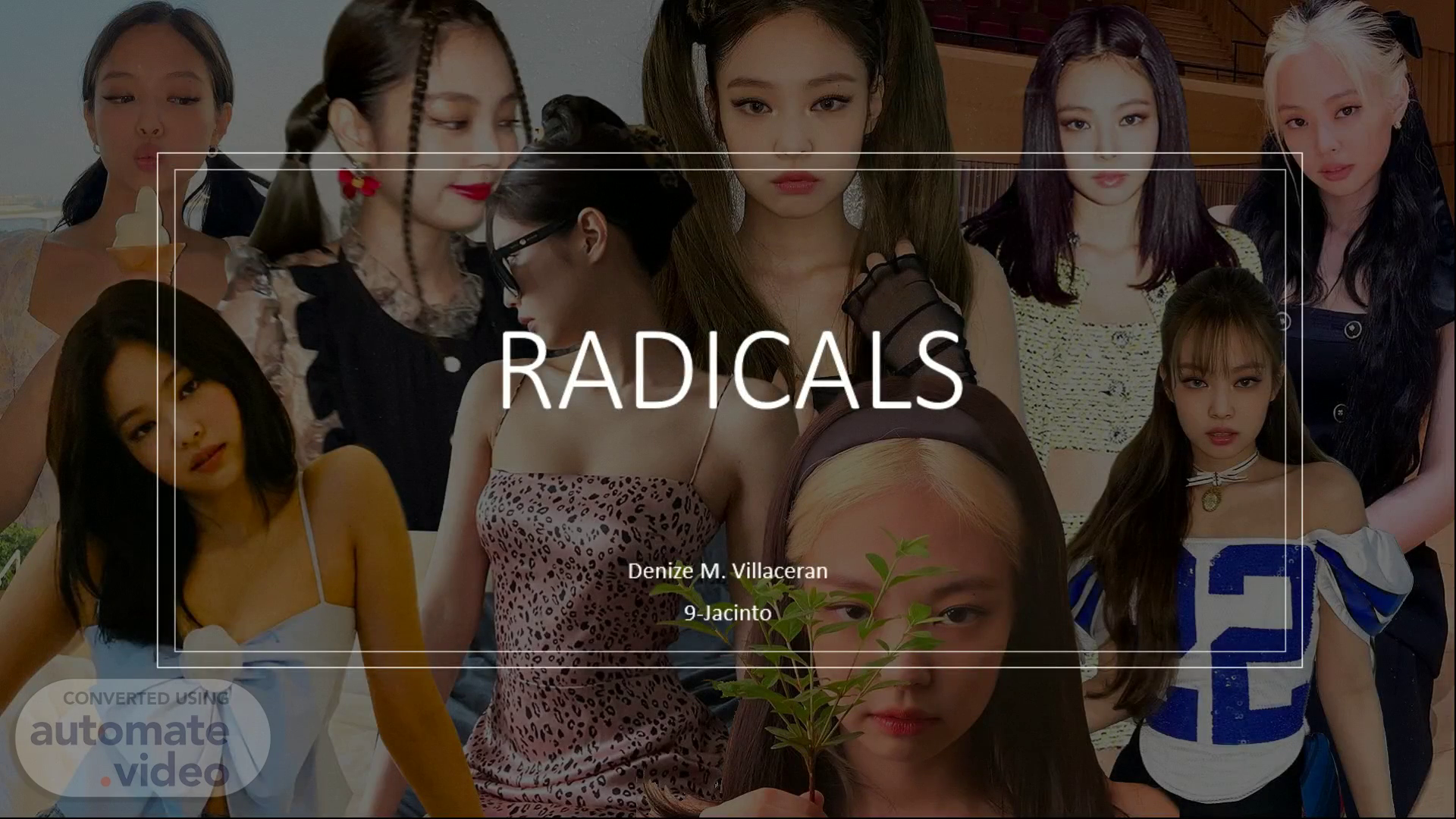Scene 1 (0s)
00 . •. RADICALS. Denize M. Villaceran 9-Jacinto.
Scene 2 (9s)
Logo Description automatically generated.
Scene 3 (16s)
FREE RADICALS. Diagram Description automatically generated.
Scene 4 (26s)
A free radical can be defined as any molecular species capable of independent existence that contains an unpaired electron in an atomic orbital . The presence of an unpaired electron results in certain common properties that are shared by most radicals. Many radicals are unstable and highly reactive. Free radicals and other ROS are derived either from normal essential metabolic processes in the human body or from external sources such as exposure to X-rays, ozone, cigarette smoking, air pollutants, and industrial chemicals. Although there are several enzyme systems within the body that disarm free radicals, the principal antioxidants are vitamin E, beta-carotene, vitamin C, and selenium. When these antioxidants neutralize free radicals by donating an electron particle they are left with a small problem..
Scene 5 (1m 0s)
Cause Of Free Radicals. Free radicals and other ROS are derived either from normal essential metabolic processes in the human body or from external sources such as exposure to X-rays, ozone, cigarette smoking, air pollutants, and industrial chemicals..
Scene 6 (1m 20s)
To Cure Free Radicals. Thousands of chemicals can act as antioxidants . Vitamins C, and E, glutathione, beta-carotene, and plant estrogens called phytoestrogens are among the many antioxidants that may cancel out the effects of free radicals. Many foods are rich in antioxidants.
Scene 7 (1m 38s)
Graphical user interface, logo, website Description automatically generated.
